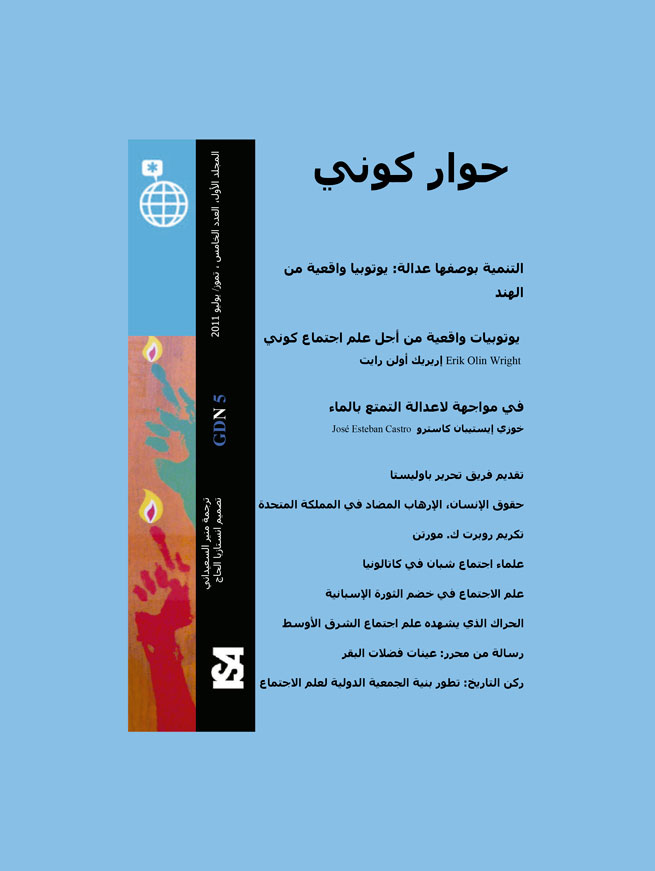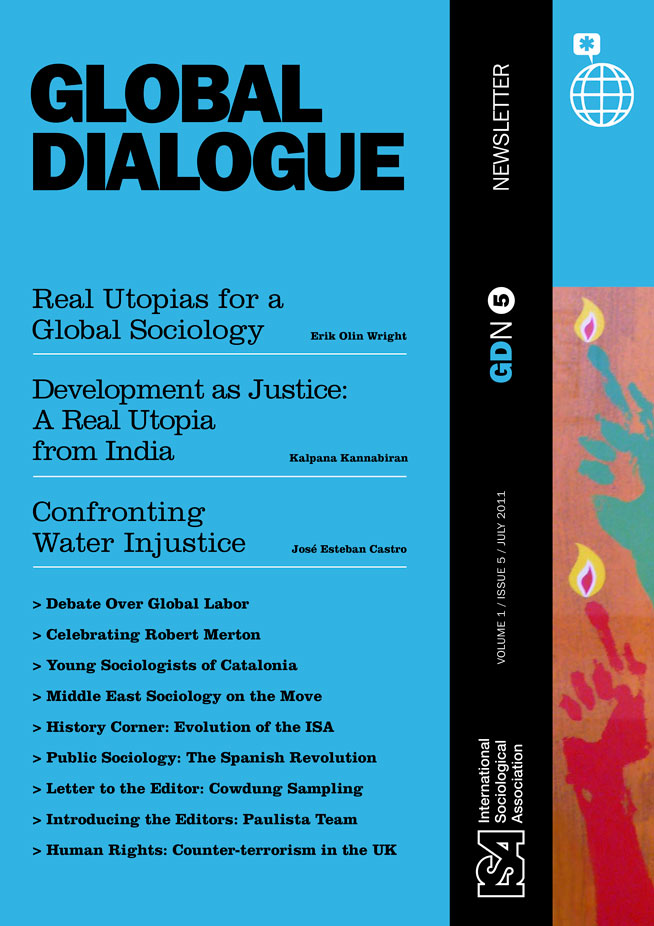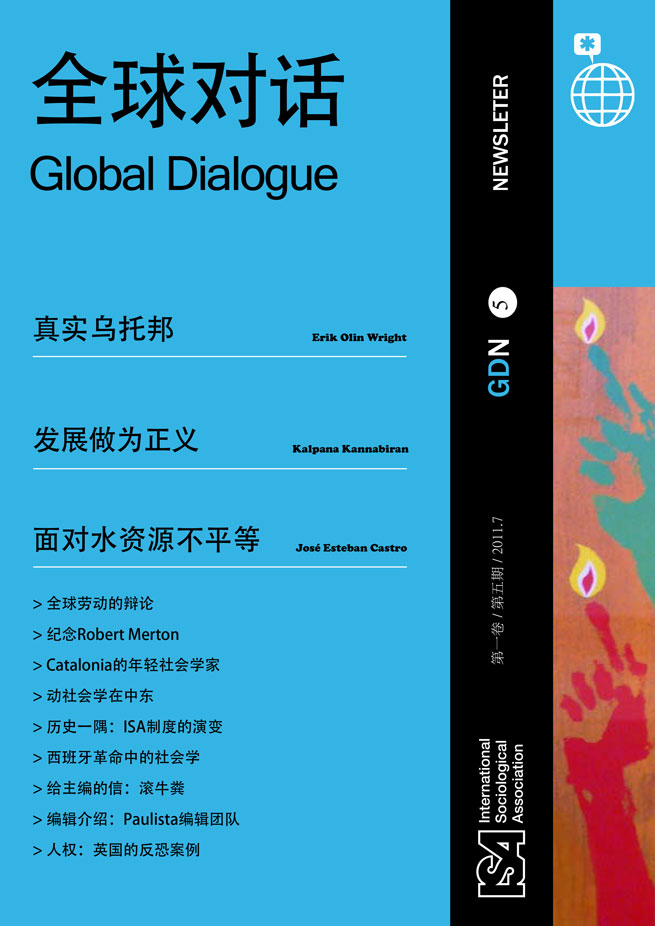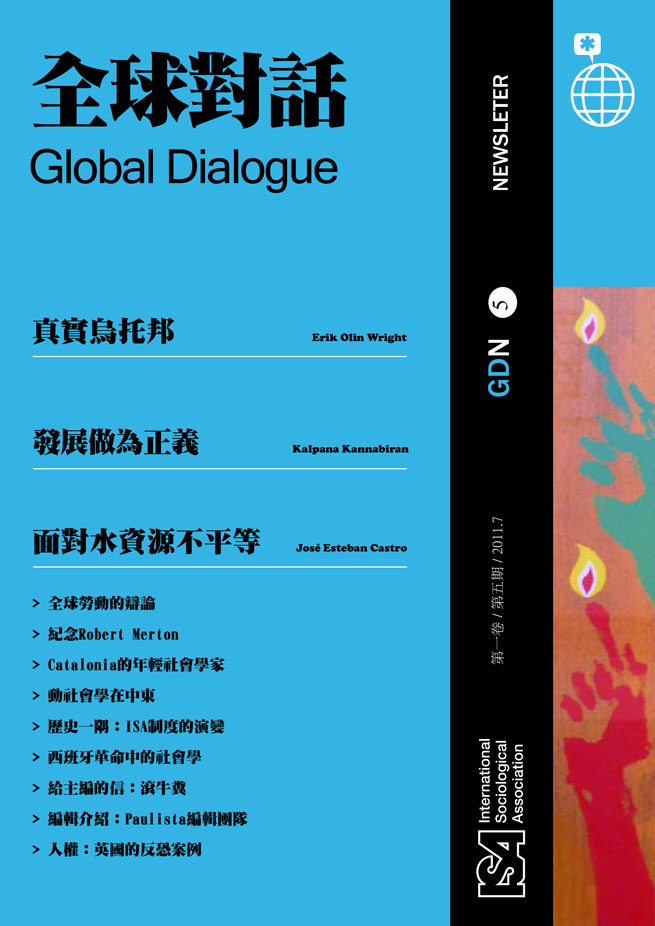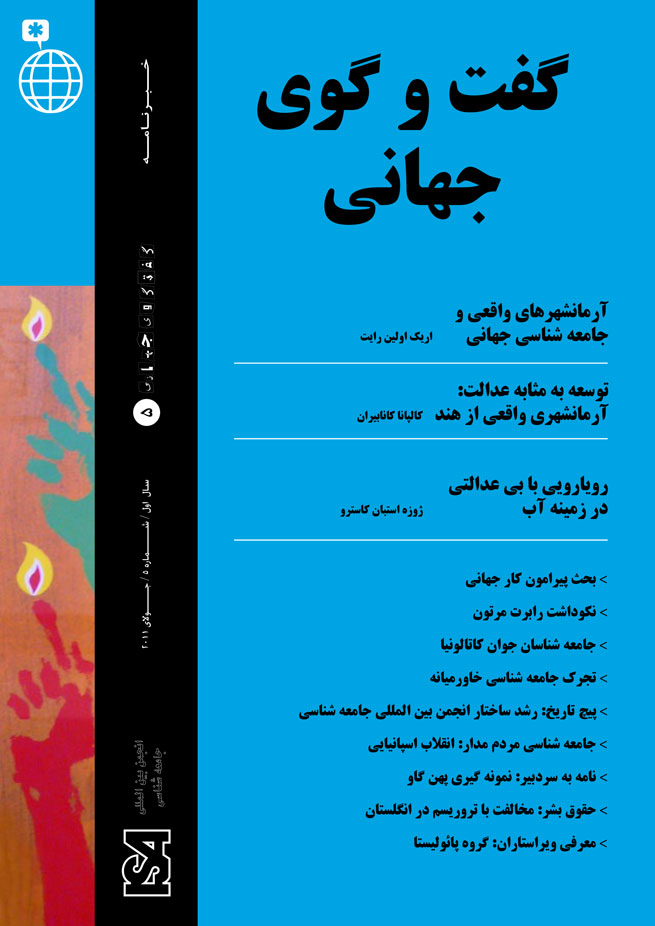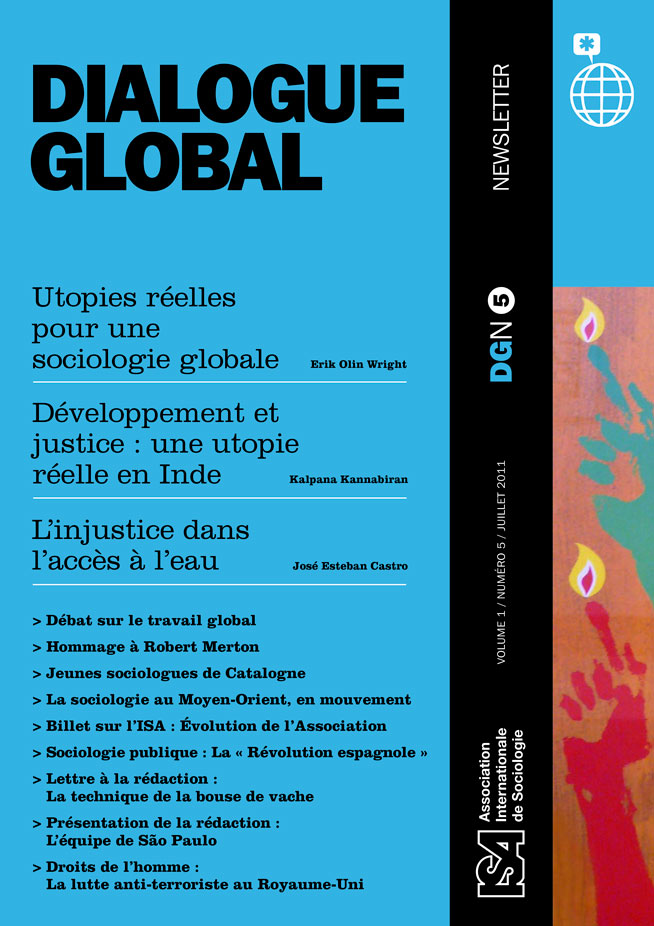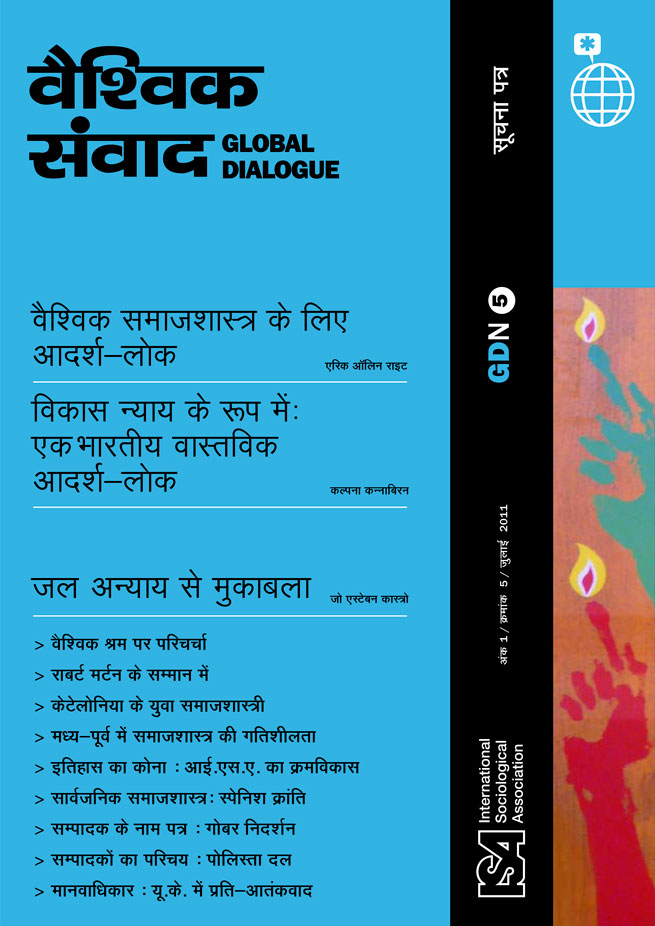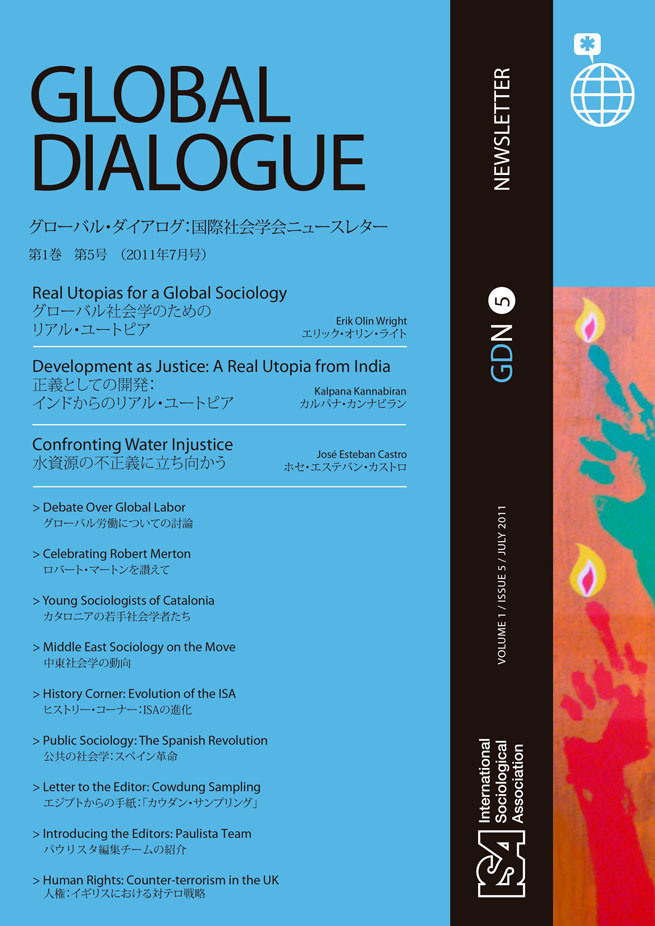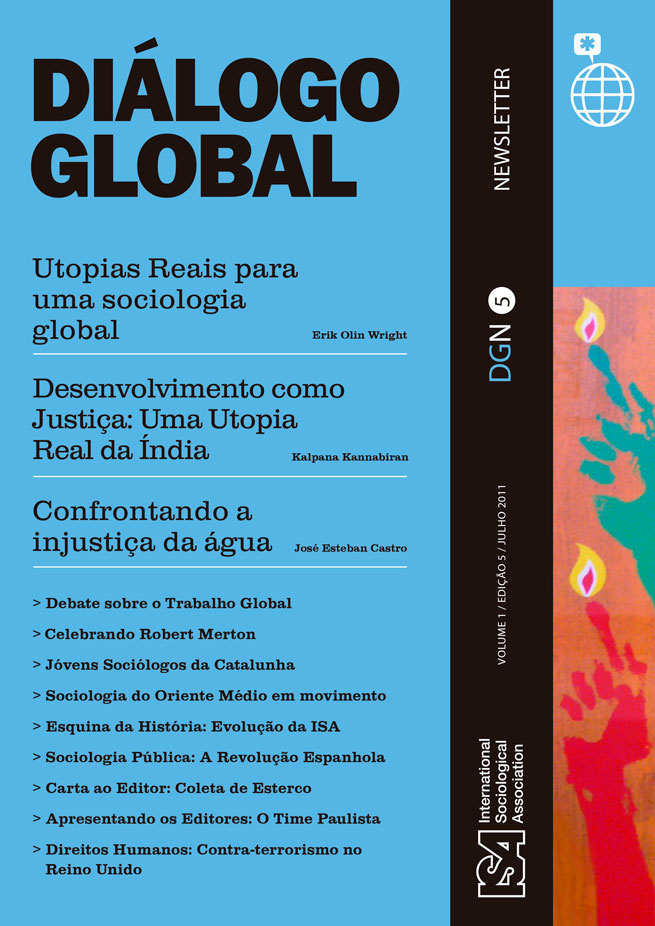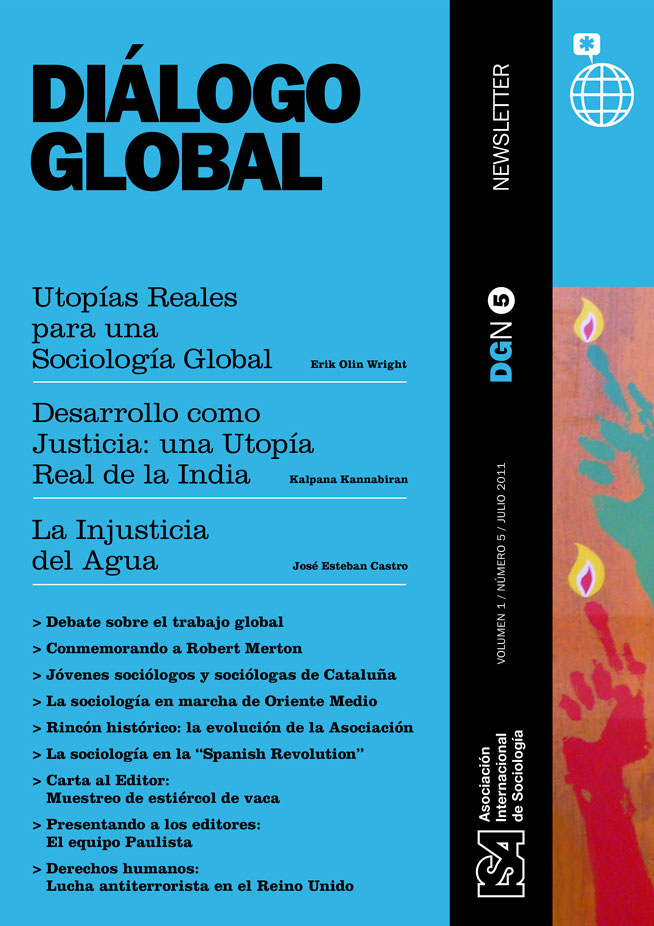Read more about Real Utopias
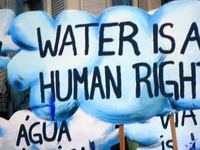
Confronting Water Injustice
by José Esteban Castro
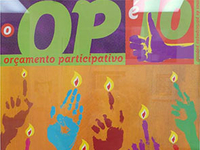
Real Utopias for a Global Sociology
by Erik Olin Wright
July 18, 2011
In India the dense discourse of development is as internally diverse, ironically, as the stunning biodiversity of our forests, hills and forested lands, though not anywhere near as energizing as these might be if conserved. Rather than follow a path through this discourse, I will attempt to trace some connections that emerge from my work with adivasi communities and our collective engagements with the Constitution and law in the course of this work.
For a start, there are several ways of approaching ‘development.’ The dominant associations of the term are: ‘displacement,’ ‘big dams,’ ‘environmental degradation,’ ‘green revolution,’ ‘economic growth,’ mining, armed occupation, the appropriation of indigenous knowledge, trade liberalization and globalization. Somewhat muffled by the juggernaut of this ‘development’ – both its practice and importantly, the resistance to it – is the ‘other development’ associated with sustainability, permaculture, environmental protection, the nurturing of ecological systems and traditional knowledge systems. Included here are the small, yet determined, struggles across the Indian subcontinent to find survival, voice and visibility – the resistance to POSCO, Vedanta, Narmada, Polavaram; and the resistance in Chhattisgarh and Manipur, among others. The list is a book in itself.
If we use the frameworks of this ‘other development’ as our point of departure, it can scarcely be contested that pluralism and diversity (of all life forms) should lie at its core. A close look at the struggles for survival and dignity by communities and practitioners of the ‘other development’ (pardon the clumsiness of this formulation, but it is quite systematically othered and distanced from the norm), underscores the practical unattainability of justice as its core problem. While it is important to look at development as freedom, and to map carefully the ways in which development may be achieved through the realization of capabilities (see the enormous corpus of writings especially by Martha Nussbaum and Amartya Sen), it is necessary also to re-examine the barriers to freedom and the realization of capabilities in their historical and social specificity; it is imperative to understand the ways in which our social order engenders the development of underdevelopment and unfreedom (to recall a much older debate).
Among adivasi communities, there are more than 500 scheduled tribes recognized under Article 342 of the Constitution of India, that are spread across the country with the exception of the states of Punjab, Haryana, Delhi, Pondicherry and Chandigarh. Central and North East India have the largest concentrations of adivasi communities, the proportion being over fifty percent in the states of the North East, Lakshadweep, Dadra and Nagar Haveli. Of these, roughly 75 are described as Primitive Tribal Groups [PTGs] in official discourse, a description that is ostensibly based on habitat, economy and population size – but one that is also a stigmatizing descriptor.
Non-discrimination and liberty take on a very distinctive resonance for adivasis. Nomadic and semi-nomadic tribes, as well as pastoralists and tribes engaged in hunting, food gathering and shifting cultivation, require the guarantee of the freedom of movement with the right to a mobile territoriality. Tribes living in areas recognized under Schedules V and VI of the Indian constitution require the right to remain in these areas without fear of eviction, assuring them of the freedom not to move. Persons belonging to tribes listed in the Schedule who live in non-scheduled areas have no guarantees of protection of their homelands, even though these might have existed for generations.
In all these cases, the right to liberty is expressed in terms of definitions of territoriality – homelands that could be mobile or fixed, but they confer a particular identity on its people, enabling distinct livelihood practices. Relations of land have been at the core of the adivasi engagement with the law and the constitution – both in the case of the peasant and non-peasant communities – so that major victories have been won through taking struggles into courts of law.
Since a majority of adivasi communities are forest dwellers, the homeland issue is not limited to land, but extends to their presence in the entire forestscape. Accordingly, the concerns of these communities are not limited to livelihood and residence alone, but spread out over issues of ecology, environment, conservation, regeneration and knowledge systems that are all part of the political economy of the forest. Because of their close connection to forest life, they are easy targets of wildlife protection and forest conservation authorities and groups.
Their location in the forestscape gives rise to struggles around governance, autonomy and self-determination, as well as forest rights – struggles that pose a threat to the conception of sovereignty held by the neo-liberal developmental state. Yet, it is the very defense of autonomy – expressed in the adivasi slogan “maava naate maava raaj” [our land, our rule] but also in Schedules V and VI of the Indian Constitution – that specifically protects adivasi homelands and provide the language, tools and strategies to counter the callous, hegemonic and violent sovereignty that tries to limit the reach of the constitution.
Adivasis also increasingly find themselves pitted against a powerful lobby in the Supreme Court, which is located at an insurmountable physical and social distance from them. They have nevertheless asserted their right with a tenacity that has been their primary inheritance across generations – although the popular imagination tends to stigmatize them as “simple,” and “lacking in guile.”
The Panchayats Extension to the Scheduled Areas Act of 1996 (hereafter PESA) and the Scheduled Tribes and Other Traditional Forest Dwellers (Recognition of Forest Rights) Act of 2006 (Forest Rights Act) are designed to regulate governance and political autonomy. As such they became the lightning rod of intense struggles and deliberations by adivasi networks across the country. In an important sense, the debates around these acts represent an exercise in popular and even transformative constitutionalism.
For adivasis to enjoy the right to non-discrimination under the Constitution of India, the right to liberty must translate into freedom from internal colonization, a right that was affirmed on paper in 1950, the year the constitution came into force. It is therefore apt to situate PESA and FRA within the framework of constitutional morality. For Ambedkar, the great defender of popular and constitutional rights, the peaceful working of a democratic Constitution required a “form of administration […] appropriate to and in the same sense as the form of the Constitution.”
We can now restate the question: How does discrimination produce exclusion from development conceived of in terms of justice? It is this multi-layered context of discrimination and intersecting multiplicity of oppressions that needs to be reckoned with in constructing an idea of development. Given the specific and increasing manifestations of discrimination and its self-perpetuating tendency, the idea of development must not remain, as it has for the most part been in the past, a counter-constitutional project, but enter the field of constitutionalism and proliferate its tools. Although the field of justice may be opened up in many different ways, it is productive to use constitutionalism to promote the close connection of development and justice. What aspects of constitutionalism are indispensable for this idea of development as justice? If we agree that pluralism and diversity without prejudice are ideally the pulse of a vibrant and just society, and therefore central to the idea of development, how does the constitution speak to this imperative?
The constitutional approach frames development as a bounded endeavor in which justice and freedom are spatially and socially hedged in and held together by the democratic state – responsible for protection against harm, for distribution of goods and for the realization of capabilities, in short a key repository of constitutional morality. These are not responsibilities easily or willingly borne by any government, but they are undeniably the responsibility of the state that can discipline governments, especially when subject to pressures from movements for civil liberties and adivasi rights.
Kalpana Kannabiran, Council for Social Development, Hyderabad, ISA Program Committee
This issue is not available yet in this language.
Request to be notified when the issue is available in your language.
If you prefer, you can access previous issues available in your language:
